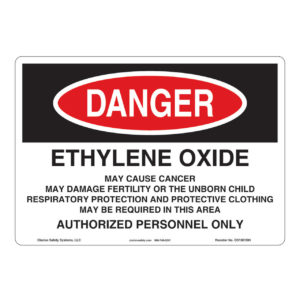Public Citizen Urges EPA to Address Cancer Risks
"Ethylene oxide rule" doesn't go far enough
Public Citizen letter to EPA on cancer risk
 Public Citizen’s Texas office is urging the U.S. Environmental Protection Agency to adopt more stringent rules to reduce the risk to communities from toxic air pollutants.
Public Citizen’s Texas office is urging the U.S. Environmental Protection Agency to adopt more stringent rules to reduce the risk to communities from toxic air pollutants.
In a letter dated Feb. 18, Adrian Shelley, Public Citizen’s Texas 0ffice director, said the Miscellaneous Organic Chemical Manufacturing, or “MON” rule, designed to protect communities from some 150 toxic chemicals, including benzene, ethylene oxide, and 1,3 butadiene, isn’t strong enough.
“We are writing to encourage the Environmental Protection Agency (EPA) to go further with this rule.,” Shelley wrote. “The “Miscellaneous Organic Chemical Manufacturing,” or “MON” rule is an opportunity. The EPA’s own analysis determined that the health risk to communities living near MON facilities was “unacceptable.” But EPA has not taken strong enough action to protect those communities with an adequate margin of safety. Instead the EPA is putting communities at risk by exposing them to too much pollution.
“This pollution creates a high cancer risk for nearby communities. EPA must acknowledge this risk and create a rule to protect community health,” Shelley added.
The EPA’s proposed rule would leave communities exposed to cancer risk as high as 300-in-1 million. The generally accepted “Maximum Individual Risk” (MIR) is 1 in a million. In the benzene NESHAP rule, the EPA determined that a 100-in-1 million MIR is acceptable. In the rule, the EPA stated that, ‘‘an MIR of approximately one in 10 thousand should ordinarily be the upper end of the range of acceptability. As risks increase above this benchmark, they become presumptively less acceptable.
“EPA must remember that communities in places like Houston live literally on top of industrial facilities” Shelley wrote. These community members are literally within the shadow or on the fenceline of massive petrochemical operations. In Texas, state and local governments do very little to protect communities from the risk of toxic exposure. The EPA must appreciate that risk in these communities is greater than elsewhere. And that only strong federal rules with meaningful floors for action will compel Texas to improve the situation on the ground.